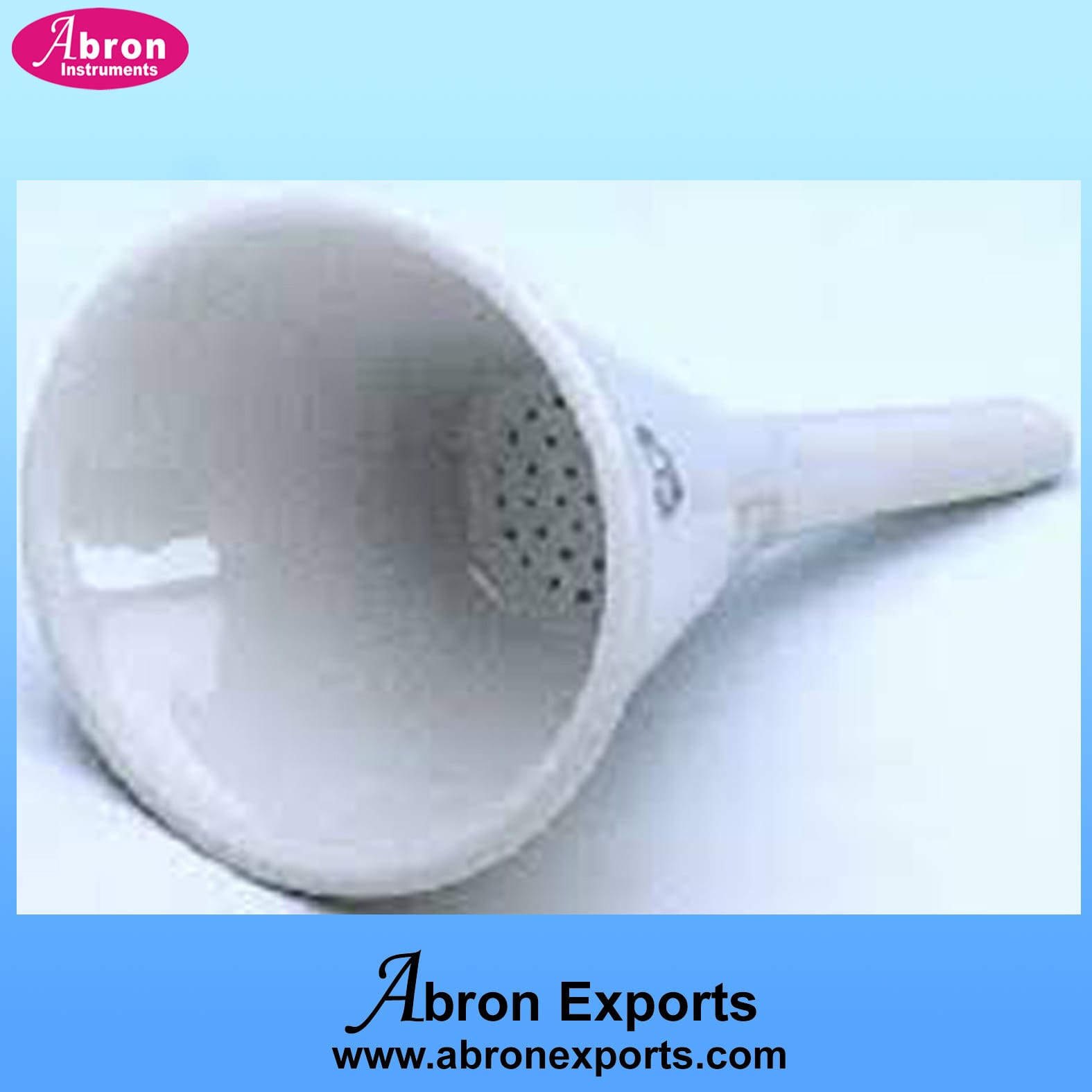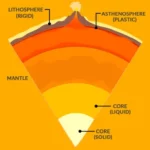Filtering in the lab can feel overwhelming with so many options. This guide clarifies the nuances of two common tools: the Hirsch and Buchner funnels. We’ll cover their unique features, ideal use cases, and how to choose the best one for your needs. We’ll also explore the underlying principles of filtration and the broader context of these essential lab tools.
Decoding the Hirsch Funnel
The Hirsch funnel is your go-to for small-scale filtration. Imagine a miniature filtering cone designed to separate solids from small liquid volumes efficiently. This compact tool boasts a conical shape and a perforated plate at the bottom, acting like a tiny sieve. Liquid passes through while the solid particles you want are trapped. The cone shape promotes quick drainage, and the funnel can be used with a vacuum to accelerate the process.
Key Features and Advantages of the Hirsch Funnel
- Cone of Efficiency: This shape isn’t just aesthetically pleasing; it guides liquids downward and concentrates solids, simplifying collection.
- Perforated Precision: The perforated plate supports the filter paper and acts as a built-in strainer, efficiently trapping solid particles.
- Vacuum Boost: Connecting the side arm to a vacuum source speeds up filtration significantly, pulling the liquid through the filter paper much faster than gravity alone.
- Small-Scale Specialist: Perfect for small volumes and recovering small amounts of solid, minimizing loss of precious material.
- Versatile Performer: Useful for a variety of applications, from purifying crystals and analyzing particle size to extracting specific compounds.
- User-Friendly Design: Easy to set up and use, even for those new to the lab.
Understanding the Buchner Funnel
The Buchner funnel is the workhorse of the lab, designed for larger-scale filtrations. It’s typically made of porcelain or plastic and features a cylindrical shape with a flat, perforated base. Like the Hirsch funnel, it uses filter paper to trap solids, but its larger size makes it ideal for handling more substantial volumes. It’s highly effective when used with a vacuum system, quickly and efficiently separating solids from liquids.
Advantages of the Buchner Funnel
- Rapid Filtration: The large surface area allows for more filter paper and faster filtration, especially for larger volumes.
- Efficient Solid Collection: Excels at isolating desired solids and purifying larger batches of liquid.
- Versatile Applications: Used across various scientific disciplines, from chemistry and pharmaceuticals to environmental science and materials science.
Hirsch vs. Buchner: Picking the Right Tool
Choosing between a Hirsch and Buchner funnel depends on your specific needs. Here’s a comparison:
| Feature | Hirsch Funnel | Buchner Funnel |
|---|---|---|
| Size | Smaller (typically <10mL capacity) | Larger (various sizes available) |
| Shape | Conical | Cylindrical |
| Ideal Use | Small-scale filtrations, recovering small amounts of solid, fine precipitates | Large-scale filtrations, rapid filtration of large volumes |
| Vacuum Efficiency | Suitable for vacuum, but less efficient for large volumes | Highly efficient with vacuum systems |
If you’re working with complex mathematical equations and struggling to find the Jacobian matrix, you should try our jacobian calculator.
Step-by-Step Guide to Using a Hirsch Funnel
- Secure the Setup: Place the Hirsch funnel firmly on a filter flask with a side arm for vacuum connection.
- Prepare the Filter Paper: Choose a filter paper slightly smaller than the perforated plate (around 1.3cm diameter for small Hirsch funnels). Wet it with the same solvent used in your filtration to create a seal and prevent leaks.
- Activate Vacuum: Turn on the vacuum source to create suction in the filter flask. Control the vacuum carefully to avoid damaging the filter paper.
- Gentle Pouring: Slowly and steadily pour the mixture into the funnel, avoiding splashes or overflowing.
- Rinsing (Optional): After filtration, rinse the collected solid with a small amount of solvent to remove impurities.
- Drying: Turn off the vacuum, carefully remove the filter paper with the solid, and allow it to dry completely.
Real-World Applications of Hirsch and Buchner Funnels
Both funnels are valuable across scientific disciplines. The Hirsch funnel shines in:
* Crystallization: Isolating pure crystals from small-scale reactions.
* Particle Size Analysis: Separating particles based on size using filters with different pore sizes.
* Solid-Phase Extraction: Extracting target compounds from small liquid samples.
The Buchner funnel is favored for:
* Large-Scale Purification: Purifying large batches of liquids or isolating larger quantities of solid product.
* Industrial Processes: Solid-liquid separations in various industrial settings, such as wastewater treatment.
Troubleshooting and Best Practices
- Slow Filtration: This may suggest the filter paper is clogged, the vacuum is weak, or the particles are too fine. Try replacing the filter paper, checking the vacuum source, or using a finer filter.
- Filter Paper Rupture: Excessive vacuum can rupture the filter paper. Apply vacuum gradually and monitor pressure.
- Leaks: Ensure a tight seal between the funnel, the filter flask, and the vacuum tubing.
The Future of Filtration
Ongoing research explores new materials and designs for filtration systems, potentially leading to even more efficient and specialized funnels. While the fundamental principles of the Hirsch and Buchner funnels remain, advancements in materials science could improve durability, filter efficiency, and the ability to separate increasingly finer particles.
This guide has provided a comprehensive overview of Hirsch and Buchner funnels, their applications, and how to use them effectively. By understanding these nuances, you can choose the perfect tool for your filtration needs and optimize your lab work.
















1 thought on “Hirsch Funnel vs. Buchner Funnel: Choosing the Right Filtration Tool for Your Lab”
Comments are closed.